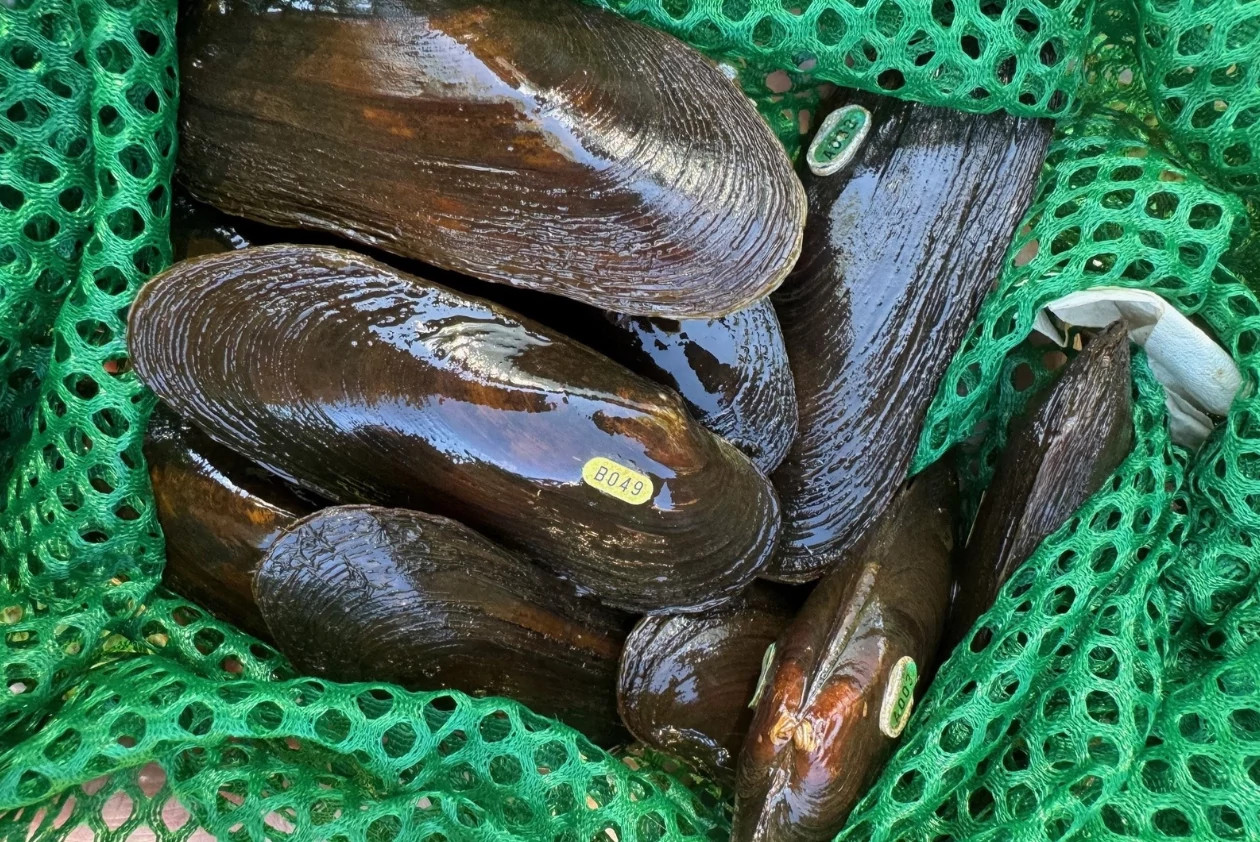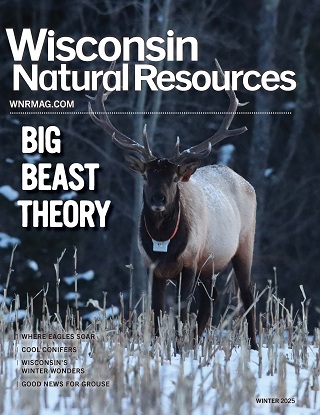Contact: Jesse Weinzinger, DNR Aquatic Zoologist
Jesse.Weinzinger@wisconsin.gov or 608-397-0198
Partnerships Allow Release Of First Hatchery-Reared Endangered Spectaclecase Mussels
 Staff from the Wisconsin DNR, Minnesota DNR and the U.S. Fish and Wildlife Service worked together to release spectaclecase mussels in the Chippewa River.
Photo credit: Megan Bradley, U.S. Fish and Wildlife Service
Staff from the Wisconsin DNR, Minnesota DNR and the U.S. Fish and Wildlife Service worked together to release spectaclecase mussels in the Chippewa River.
Photo credit: Megan Bradley, U.S. Fish and Wildlife Service
MADISON, Wis. – The Wisconsin Department of Natural Resources (DNR) announced today that 177 endangered native spectaclecase mussels were released into the Chippewa River as part of an effort to reestablish a reproducing population.
The spectaclecase mussel (Cumberlandia monodonta) was once considered extirpated from the Chippewa River due to habitat degradation and decades without confirmed records. This native mussel is on both the federal and state endangered species list in Wisconsin. Staff from the Wisconsin DNR, Minnesota DNR and the U.S. Fish and Wildlife Service worked together as part of a broader, federal strategy focused on recovery, research and habitat restoration, aiming to restore self-sustaining spectaclecase populations throughout their historical range.
The host fish for spectaclecase mussels are the mooneye and goldeye, which the mussels require to complete their lifecycle. The search for the host species took decades, and these mussels are the first to be released from those efforts. The Minnesota DNR propagated juvenile mussels, then moved them to Genoa National Fish Hatchery, where the U.S. Fish and Wildlife Service reared them for up to five years to improve their survival. Wisconsin DNR staff identified a location in the river that meets their unique habitat needs. Spectaclecase mussels do not occur in the bottom of the river like most other mussel species. Rock piles at the base of rock walls, riprap or large flat rocks provide “hidey” holes in and under rocks where they are near, but protected from, the flow.
“Propagation and reintroduction are useful conservation strategies to increase the abundance and distribution of native mussel populations,” said Jesse Weinzinger, Wisconsin DNR aquatic zoologist. “We’re thankful for the partnerships that made it possible to augment mussel populations in these streams and provide research going forward to help us shape recovery efforts.”
Spectaclecase mussels can grow up to 9 inches long and are named for the shape of their shells, which are elongated and sometimes curved. Historically, the spectaclecase was found in at least 44 streams of the Mississippi, Ohio and Missouri river basins in 14 states. It has vanished completely in three states and today is rarely found in only 20 streams, according to the U.S. Fish & Wildlife Service.
Their current distribution and status in the Mississippi River and St. Croix River were poorly known until the recent surveys by the DNR and other partners in 2019, 2020 and 2021.
Help Endangered Wisconsin Species
Help mussel conservation and recovery with a donation to the Endangered Resources Fund.
Wisconsin has 50 native mussel species, with 24 endangered, threatened or in need of conservation. Native mussels are important for keeping Wisconsin rivers clean. They filter pesticides, mercury and other pollution from the water and keep it out of fish. They help indicate problems that may affect whole lake or river ecosystems. They also provide food for otters, raccoons, muskrats, ducks, fish and other wading birds.

